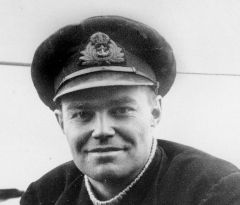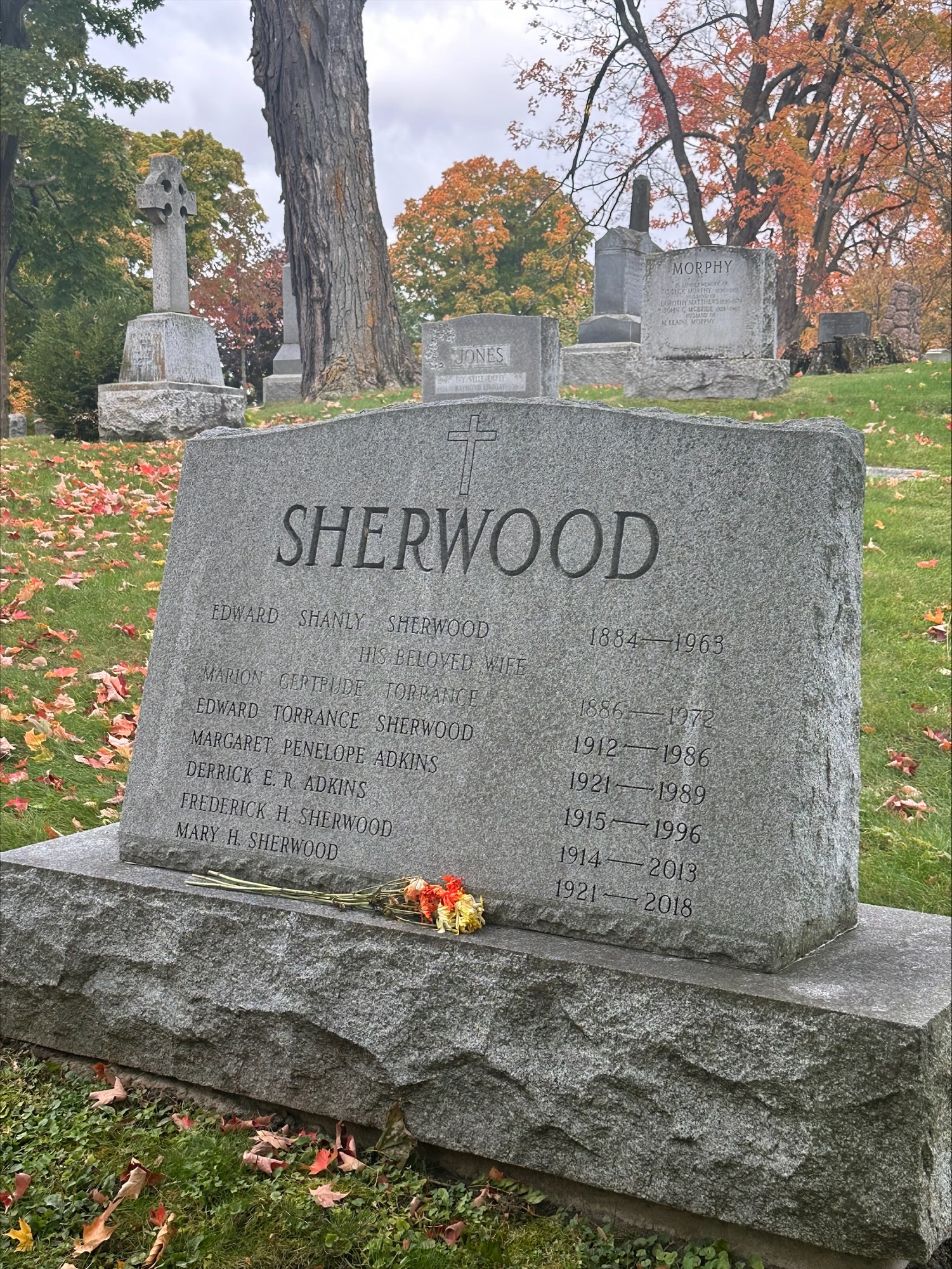
Frederick H. Sherwood: Trailblazing Submarine Commander and WWII Hero
Frederick H. Sherwood: Canada's Trailblazing Submarine Commander and WWII Hero
27 April 1921 – 14 May 2013 Section 50
Lieutenant Commander Frederick Henry Sherwood was a pioneering figure in Canadian naval history, best known for being the first Canadian to command a Royal Navy submarine during World War II. His groundbreaking achievements, courageous leadership, and long-term contributions to Canada's naval forces made him a key figure in the development of Canadian submarine warfare.
Early Life and Naval Service
Born in Winnipeg and raised in Ottawa, Sherwood joined the Royal Canadian Naval Volunteer Reserve (RCNVR) in 1933, long before the outbreak of the war. At the time, Canada lacked its own submarine fleet, and when the war began, Sherwood was among 27 Canadians who volunteered to serve in the British submarine service. In 1940, Sherwood and fellow Canadian J.D. Woods became the first Canadian reservists to complete the Royal Navy's submarine officer training. Sherwood opted to stay in the North Atlantic, while his colleague deployed to the Mediterranean.
Wartime Command and Achievements
Sherwood served as a watchkeeping officer and first lieutenant aboard several submarines, including HMS Sealion, L23, and Safari. In 1942, he completed the demanding Royal Navy Submarine Command Course, known as the "Perisher," which had an extremely high failure rate.
Graduating with distinction, Sherwood was promoted to Lieutenant Commander and received his first command aboard HMS P556 in March 1943. Later that year, he assumed command of HMS Spiteful, where he led his crew on some of the longest and most perilous submarine patrols of the war.
As the commander of Spiteful, Sherwood operated in both the Mediterranean and the Far East. His strategic brilliance and daring leadership earned him the Distinguished Service Cross (DSC) for his successful patrols near Malta and a Bar to his DSC for his role in bombarding Japanese positions on the Andaman Islands and Christmas Island in 1945. Sherwood's Spiteful conducted critical missions that disrupted enemy supply lines, contributing to the larger Allied effort to gain control in the Pacific and weaken Japan's war capabilities.
Post-War Legacy
Following the war, Sherwood returned to Canada, where he married Mary Clarke, an officer in the Women’s Royal Naval Service. The couple settled in Ottawa and raised three children. He became a partner in his father’s real estate business, E.S. Sherwood Company Ltd., but maintained strong ties with the submarine community.
Sherwood's influence extended beyond his wartime service. In 2011, the Submarine Command Team Trainer at the Canadian Forces Naval Operations School in Halifax was named in his honour. This recognition reflected his lasting impact on Canadian naval operations, ensuring his legacy would inspire future generations of submarine officers.
Contributions to Canadian Naval History Sherwood is celebrated as a trailblazer in Canadian naval history for multiple reasons:
- First Canadian Submarine Commander: His role as the first Canadian to command a Royal Navy submarine marked a significant milestone for Canada's naval capabilities during World War II.
- Key Role in Submarine Warfare: His successful patrols and engagements, including sinking Japanese ships and bombarding key enemy positions, were crucial to the Allied war effort in both the Mediterranean and Pacific theaters.
- Mentorship and Legacy: By training and inspiring future Canadian submarine officers, Sherwood left an indelible mark on the development of Canada’s post-war naval forces.
Lieutenant Commander Frederick H. Sherwood passed away in 2013 at the age of 98, leaving behind a legacy of bravery, leadership, and service to Canada. His life and career are chronicled in his memoir, It’s Not the Ships…My War Years, published shortly after his death. His exemplary service continues to be a source of pride for both the Royal Canadian Navy and the broader Canadian military community.


